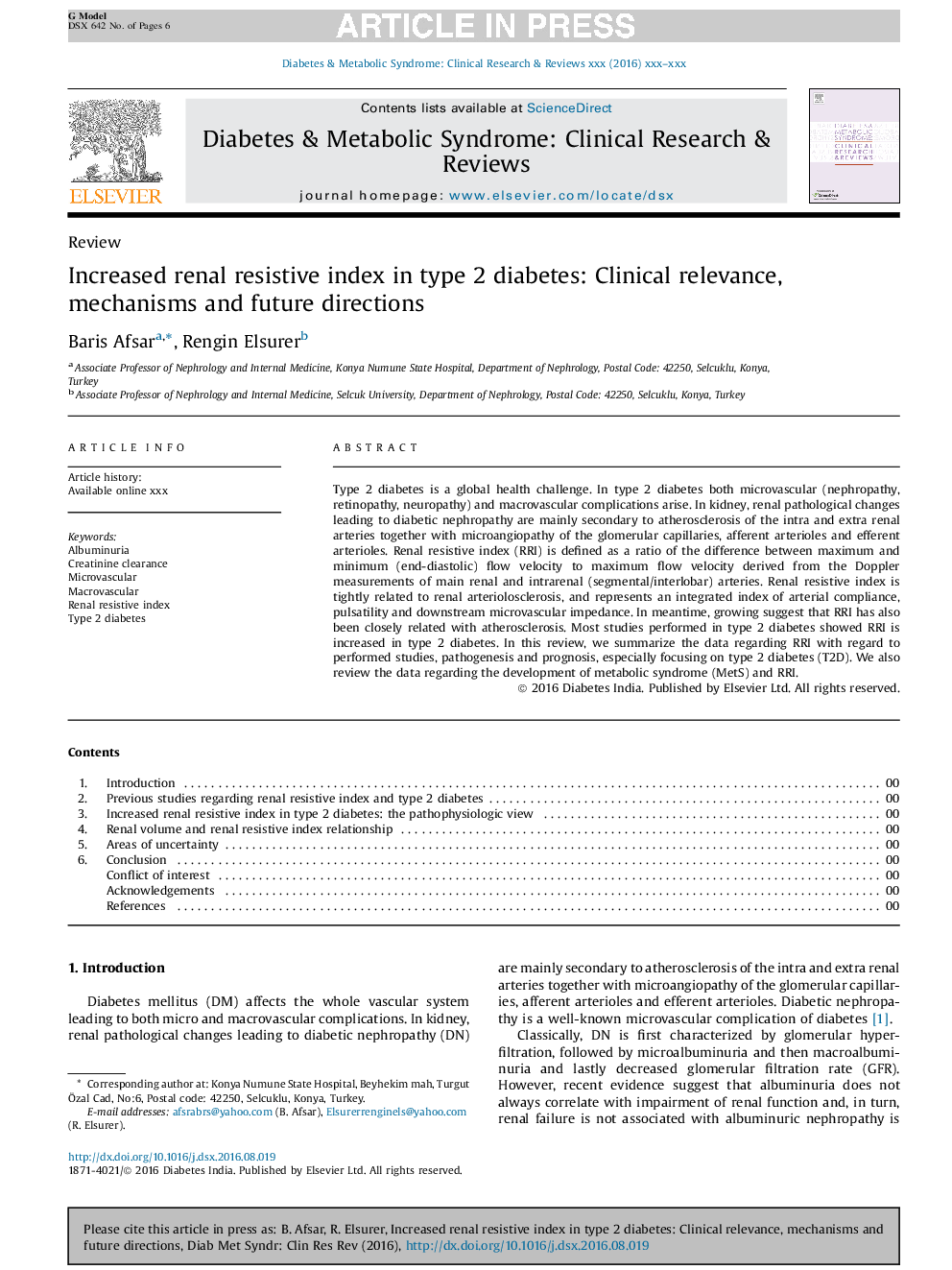| کد مقاله | کد نشریه | سال انتشار | مقاله انگلیسی | نسخه تمام متن |
|---|---|---|---|---|
| 5601679 | 1574910 | 2017 | 6 صفحه PDF | دانلود رایگان |
عنوان انگلیسی مقاله ISI
Increased renal resistive index in type 2 diabetes: Clinical relevance, mechanisms and future directions
ترجمه فارسی عنوان
افزایش شاخص مقاومت به انسولین در دیابت نوع 2: ارتباط بالینی، مکانیسم ها و جهت های آینده
دانلود مقاله + سفارش ترجمه
دانلود مقاله ISI انگلیسی
رایگان برای ایرانیان
کلمات کلیدی
موضوعات مرتبط
علوم پزشکی و سلامت
پزشکی و دندانپزشکی
کاردیولوژی و پزشکی قلب و عروق
چکیده انگلیسی
Type 2 diabetes is a global health challenge. In type 2 diabetes both microvascular (nephropathy, retinopathy, neuropathy) and macrovascular complications arise. In kidney, renal pathological changes leading to diabetic nephropathy are mainly secondary to atherosclerosis of the intra and extra renal arteries together with microangiopathy of the glomerular capillaries, afferent arterioles and efferent arterioles. Renal resistive index (RRI) is defined as a ratio of the difference between maximum and minimum (end-diastolic) flow velocity to maximum flow velocity derived from the Doppler measurements of main renal and intrarenal (segmental/interlobar) arteries. Renal resistive index is tightly related to renal arteriolosclerosis, and represents an integrated index of arterial compliance, pulsatility and downstream microvascular impedance. In meantime, growing suggest that RRI has also been closely related with atherosclerosis. Most studies performed in type 2 diabetes showed RRI is increased in type 2 diabetes. In this review, we summarize the data regarding RRI with regard to performed studies, pathogenesis and prognosis, especially focusing on type 2 diabetes (T2D). We also review the data regarding the development of metabolic syndrome (MetS) and RRI.
ناشر
Database: Elsevier - ScienceDirect (ساینس دایرکت)
Journal: Diabetes & Metabolic Syndrome: Clinical Research & Reviews - Volume 11, Issue 4, OctoberâDecember 2017, Pages 291-296
Journal: Diabetes & Metabolic Syndrome: Clinical Research & Reviews - Volume 11, Issue 4, OctoberâDecember 2017, Pages 291-296
نویسندگان
Baris Afsar, Rengin Elsurer,
